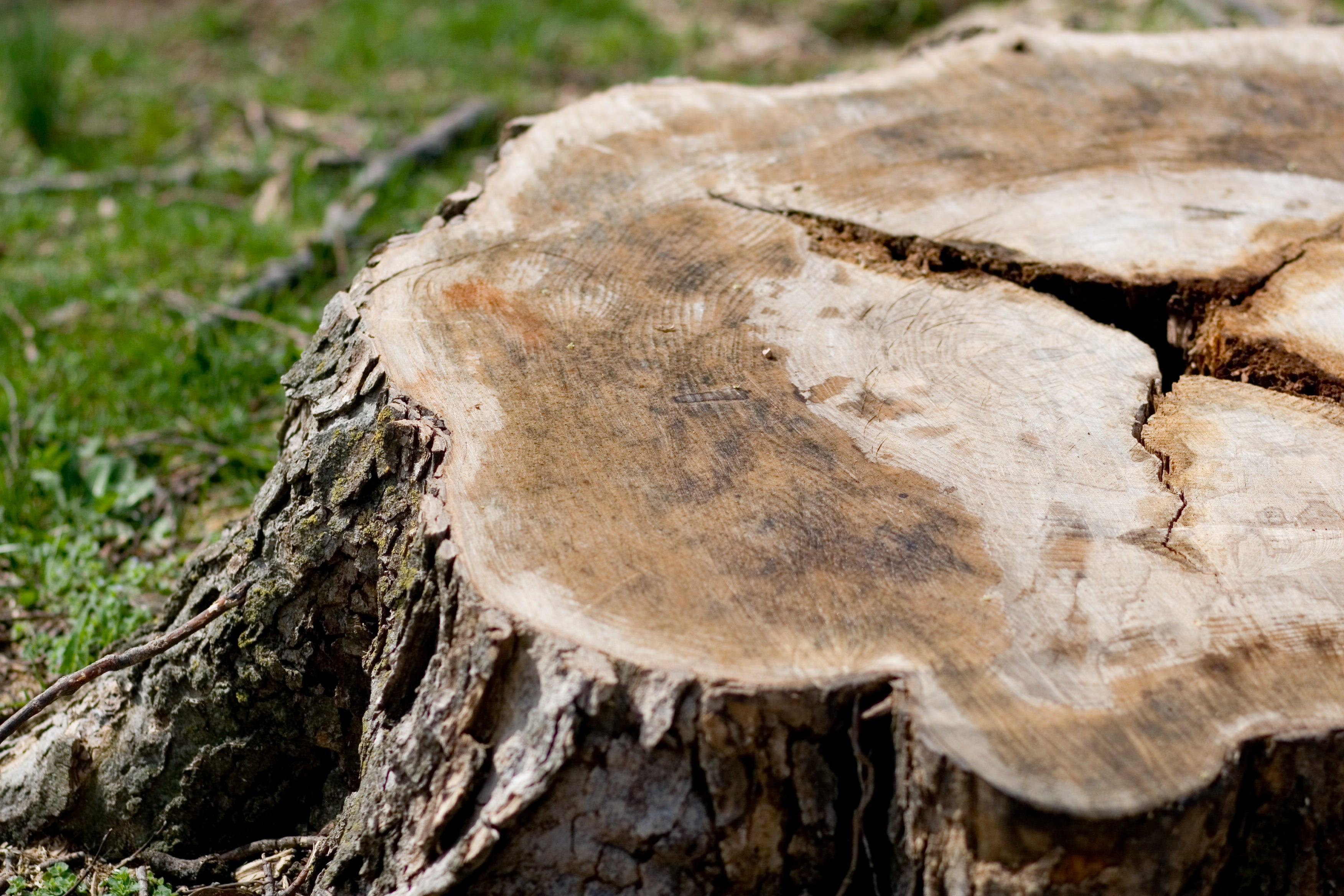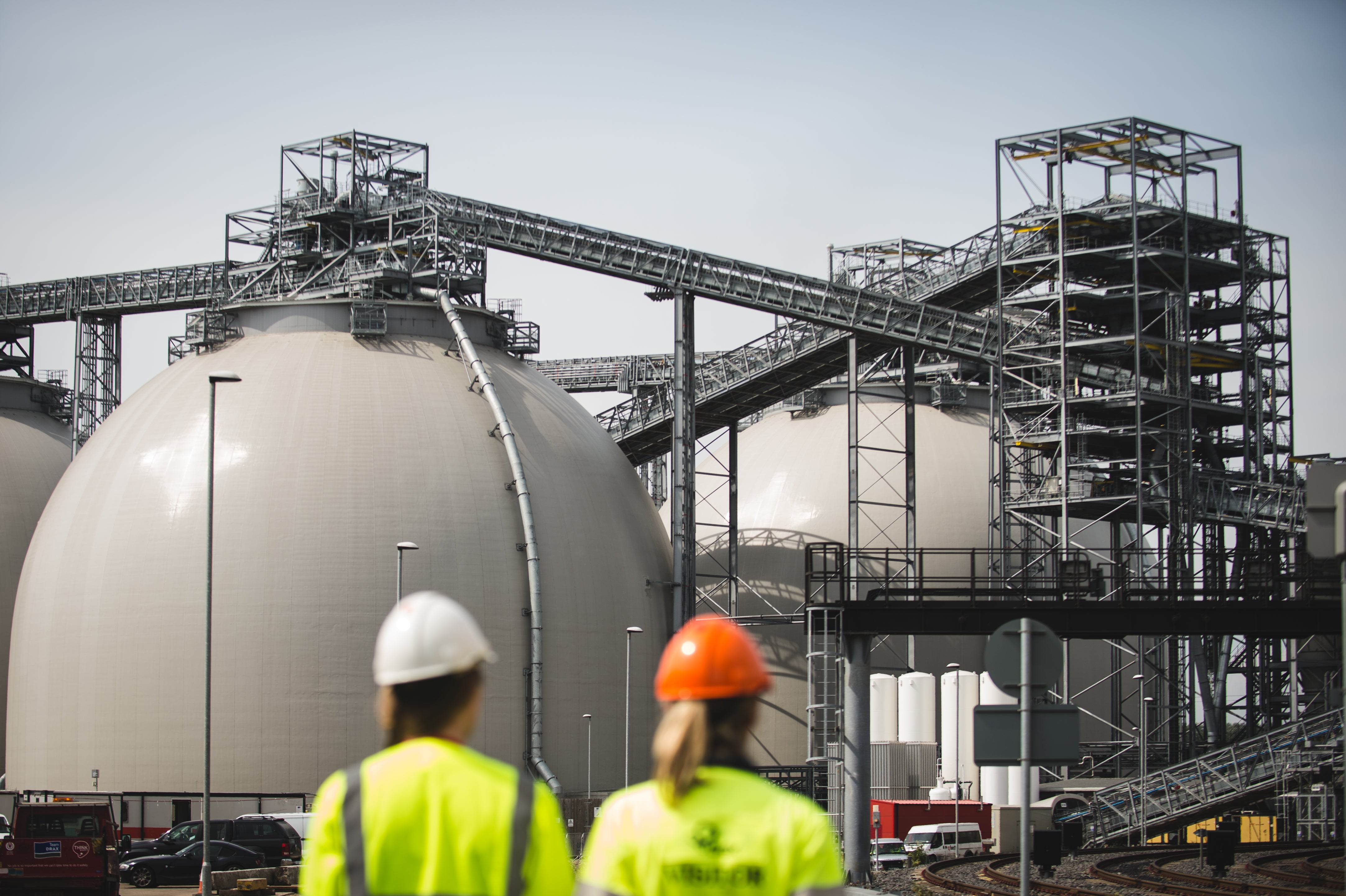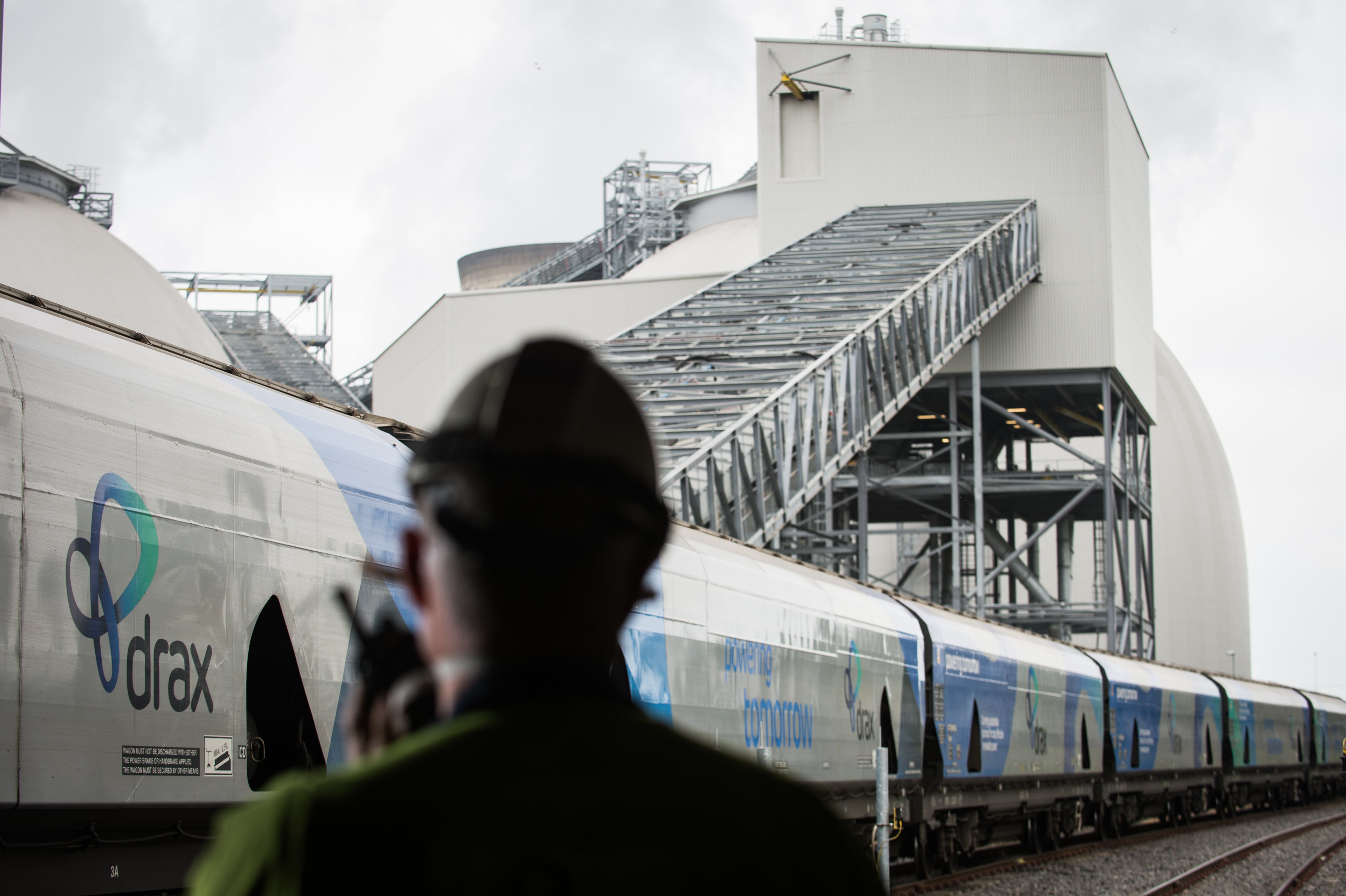Biomass power: Is the UK’s second-largest source of renewable energy sustainable?
Over the past few decades, biomass-burning has played an increasingly large role in the UK’s electricity supply. But concerns have long been raised about the sustainability of biomass power. Daisy Dunne examines the arguments


Your support helps us to tell the story
From reproductive rights to climate change to Big Tech, The Independent is on the ground when the story is developing. Whether it's investigating the financials of Elon Musk's pro-Trump PAC or producing our latest documentary, 'The A Word', which shines a light on the American women fighting for reproductive rights, we know how important it is to parse out the facts from the messaging.
At such a critical moment in US history, we need reporters on the ground. Your donation allows us to keep sending journalists to speak to both sides of the story.
The Independent is trusted by Americans across the entire political spectrum. And unlike many other quality news outlets, we choose not to lock Americans out of our reporting and analysis with paywalls. We believe quality journalism should be available to everyone, paid for by those who can afford it.
Your support makes all the difference.The rise of renewable power in the UK has occurred at an astonishing pace. Last year renewable power overtook fossil fuels to become the nation’s largest source of electricity for the first time. Just a decade earlier, three quarters of the UK’s electricity came from coal and fossil gas.
Wind power has played the leading role in the transformation of the nation’s electricity grid. It now supplies nearly a quarter of the electricity. In 2010, it supplied just 3 per cent.
The UK’s second-largest source of renewable electricity is the burning of “biomass” – a term for organic fuels such as wood, other types of plant matter and animal waste. Biomass power accounted for around 12 per cent of the UK’s electricity in 2020.
While there is generally broad support for wind power from scientists and environmental groups, the burning of biomass – particularly wood and its by-products – for power in the UK has long been seen as controversial by some.
Taking wood from managed forests and burning it to produce power is renewable in theory, it is argued. This is because the CO2 released when harvested wood is burned can be “recaptured” if new trees are planted in their place. As trees grow, they absorb CO2 from the atmosphere and use it to build new shoots, roots and leaves. (It is also sometimes argued that if trees weren’t harvested and burned, they would eventually die and release their stored CO2 back into the atmosphere anyway.)
In 2009, the EU explicitly described biomass power as a “renewable technology” in its renewable energy directive – a set of rules that the bloc came up with to help it achieve a target of deriving 20 per cent of its energy from renewables by 2020.
The move prompted a huge growth in the development of biomass power in European countries, including the UK, analysts say. The rapid growth was aided by the fact it is relatively cheap and simple to convert existing coal power plants into biomass stations.
The North Yorkshire power station Drax – which supplies around 7 per cent of the UK’s electricity – is by far the UK’s largest user of biomass. Four of its six units now burn wood pellets instead of coal. (Lynemouth Station in Northumberland is another biomass power plant.)

Drax under scrutiny
As the recipient of sizeable government subsidies, Drax has come under particular scrutiny from scientists and environmental groups.
With relatively little harvestable wood available in the UK, Drax imports the majority of its wood pellets from other countries, including the US, Canada, Brazil and several European countries. (Across the world, the UK is the largest importer of wood pellets.)
Drax says that the biomass it burns is “sourced from sustainably managed working forests which grow back and stay as forests”. Its wood pellets are made mostly from “by-products” of other industries such as “lumber and furniture”, it adds.
However, NGOs and campaigners have long accused Drax of sourcing its wood imports in a way that is unsustainable. In 2019, an investigation by the Daily Telegraph accused Drax of sourcing wood from ancient forests in Belarus and Russia.
Drax faced renewed criticism from campaign groups this week when it announced plans to purchase Pinnacle Renewable Energy, a Canadian wood pellet manufacturer.
A report released by Stand.earth, a Canadian environmental group, accused Pinnacle of sourcing wood from forests that provide a home for the southern mountain caribou, an animal threatened by habitat loss.

In a statement, Tegan Hansen, forest campaigner at Stand.earth in British Columbia, said: “UK residents may be shocked to learn that their power is being generated by burning some of the last stands of old and natural forests in British Columbia, home to endangered wildlife like caribou and among the most carbon-rich in the world.”
In response, Drax said it had “the highest biomass sustainability standards in the world” and “plan[ned] to ensure all of [its] operations adhere to those standards, driving improvements across the industry globally”.
However, it was also announced this week that one of Drax’s existing wood-pellet production sites in Mississippi will be fined $2.5m for breaking environmental rules and causing health problems for local communities.
According to the final order from Mississippi regulators, Drax’s production facility had spent several years releasing harmful levels of volatile organic compounds, which have been linked to the development of health conditions such as asthma and impaired lung function.
“It’s a relief to see Drax being held accountable for polluting the air in Mississippi, but these fines are a drop in the bucket compared to the millions the UK government hands the company in the form of biomass subsidies,” Sasha Stashwick, from the Cut Carbon Not Forests Campaign, a coalition of US and UK NGOs, said in a statement.
Reacting to the issuing of the fine, a Drax spokesperson said: “The safety of our people and the communities in which we operate is our priority. We take our environmental responsibilities seriously and we are committed to complying with all local and federal regulations.
“We monitor our emissions and when we saw that they were above the required level for volatile organic compounds (VOCs) at our Amite pellet plant in Gloster, Mississippi we notified the regional environment agency.
“We have worked closely with the agency to resolve the issue, have invested in the necessary equipment and have already started work to fit the necessary equipment as quickly as possible. Work to fit the equipment is on track to be completed by 1 July this year.”
‘Carbon debt’
Even when biomass is sourced from “sustainably managed” woodlands, there can be environmental and climate concerns, researchers have argued.
One long-standing criticism is that the assumption that the CO2 released from wood burning can be recaptured by new forest growth often doesn’t hold true in practice, says Phil MacDonald, chief operating officer at Ember, a climate and energy think tank based in the UK.

“[It’s] theoretically sound – it’s just that even a small deviation from the theory in practice can lead to total lifecycle emissions that can be larger than coal,” he tells The Independent.
For example, if mature trees are felled and burned to produce power, it will take a long time for newly planted saplings to absorb the same amount of CO2 that the larger trees once stored, researchers have argued.
Scientists have warned that this could create a “carbon debt” – a time lag before the CO2 released through biomass burning can be counterbalanced by the growth of new forests. Estimates for how long this time lag could be range from decades to centuries, and depend greatly on the type of wood or wood by-product that is harvested and what is planted in replacement.
This time lag is important to consider, scientists say, because countries must reduce their emissions as fast as possible in the coming decades if they are to limit global warming to “well below” 2C above pre-industrial levels by 2100, the goal set by the Paris Agreement. Some have argued that biomass power cannot be considered “renewable” on timescales relevant to the Paris goal as a result of the carbon debt.
The idea that the trees used for biomass production would eventually die and release their stored CO2 if it were not used for biomass power production has also been challenged by scientists. One reason for this is that if trees are left in the ground rather than harvested, they will likely soak up more CO2 over their lifetime – and some of this will be transferred to the soil when they die.
Lots of other questions have been raised about the sustainability of biomass power. For example, researchers have raised concerns that the wood needed for biomass production takes up precious land – potentially raising risks for wildlife and food production.
The UK’s independent climate advisers released a report on biomass in 2018. They recommended that the country move away from burning biomass in power plants after existing government subsidies expire in 2027 – unless the emissions from the plants can be caught using “carbon capture and storage”, a technology that is still not available at scale.
The report from the Climate Change Committee also said that there needed to be stronger rules on the kind biomass imports that are used in the UK.
“As a general rule, unsustainable or ‘high-risk feedstocks’ – feedstocks from primary, high-carbon, highly biodiverse or slow-growing forests – should be regulated out and best practice encouraged,” the report says.

Join our commenting forum
Join thought-provoking conversations, follow other Independent readers and see their replies
Comments